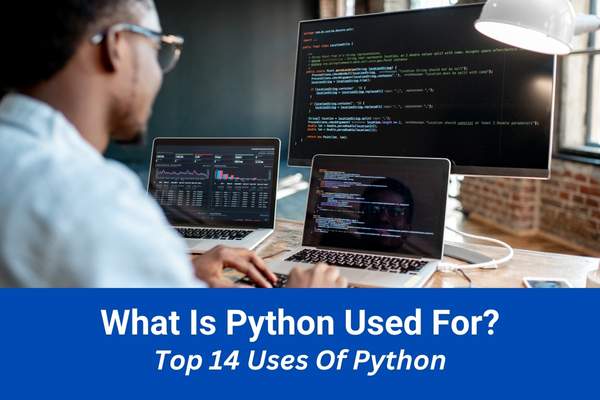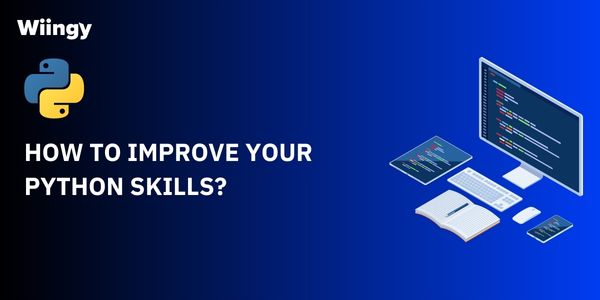Introduction
The financial sector has always been at the forefront of innovation and technology. With the rise of data-driven decision-making, Python has emerged as a leading tool in the finance world.
Whether you’re a finance professional looking to upskill or someone curious about the intersection of finance and technology, this guide will walk you through the journey of mastering Python for finance.
Looking to Learn Python? Get Python Tutoring Online. Learn from top coders and software developers.
What is Python for Finance?
Python is a versatile programming language that has found applications in various domains, including finance. In the financial sector, Python is used for tasks ranging from quantitative analysis, risk management, to algorithmic trading. Python for finance refers to the use of Python programming to solve financial problems, analyze financial data, and implement financial algorithms.
Why Python is Important in Finance?
Python’s simplicity and readability make it a favorite among finance professionals. Its ability to handle vast datasets, combined with its extensive libraries tailored for financial operations, positions it as a leading tool in the industry.
The open-source nature of Python ensures that it’s continuously updated, keeping pace with the dynamic world of finance. Moreover, Python’s adaptability allows it to integrate seamlessly with other technologies, making it a holistic solution for various financial tasks, from quantitative analysis to risk management and beyond.
How to Learn Python for Finance?
- Start with the Basics: Python’s syntax is intuitive, but it’s essential to grasp its foundational concepts. Dive into data structures like lists, dictionaries, and sets. Understand the nuances of loops, conditional statements, and functions.
- Focus on Financial Libraries: Python’s strength lies in its libraries. Delve deep into libraries like NumPy for mathematical operations, pandas for data wrangling, and Matplotlib for visualization. Each library offers unique functionalities tailored for financial tasks.
- Hands-on Practice: Theory is vital, but practice solidifies knowledge. Engage in real-world projects. Analyze historical stock prices, forecast market trends using machine learning, or even build a rudimentary trading bot.
- Continuous Learning: Finance and technology are ever-evolving fields. Regularly update your knowledge. Attend workshops, webinars, and courses. Engage with the community and learn from real-world applications.
Essential Python Libraries for Finance
- NumPy (Numerical Python): At the heart of financial calculations lies mathematics. NumPy, with its support for large multi-dimensional arrays and matrices, is indispensable for tasks like option pricing and interest rate modeling.
- pandas: Data is the lifeblood of finance. Pandas, with its DataFrame structure, offers tools for cleaning, transforming, and analyzing financial data. Whether it’s time-series data of stock prices or cross-sectional data of balance sheets, pandas has got you covered.
- Matplotlib: Visualization aids in understanding complex financial data. With Matplotlib, you can plot time-series graphs, histograms, scatter plots, and more, providing insights at a glance.
- SciPy (Scientific Computing): For advanced financial analyses, like optimization and integration, SciPy is the go-to library. It extends the capabilities of NumPy and offers tools tailored for scientific computations.
- scikit-learn: In the age of AI, predicting financial trends using machine learning is gaining traction. Scikit-learn, with its plethora of algorithms, aids in tasks like credit scoring, fraud detection, and market forecasting.
Python in Financial Analysis
- Time Series Analysis with Python: Financial data, like stock prices, is often time-stamped. Using Python, you can decompose time series data, identify trends and seasonality, and even forecast future values using ARIMA or LSTM models.
- Portfolio Optimization Techniques: Every investor aims to maximize returns while minimizing risk. With Python, you can implement the Modern Portfolio Theory, calculate the Sharpe ratio, and determine the optimal asset allocation for a diversified portfolio.
- Risk Management and Analysis: Risk is inherent in finance. Python aids in calculating various risk measures, like Value at Risk (VaR) and Conditional Value at Risk (CVaR), ensuring informed decision-making.
- Algorithmic Trading with Python: The world of trading is embracing automation. With Python, you can design trading strategies, backtest them on historical data, and automate trade execution, ensuring speed and accuracy.
Real-World Applications of Python in Finance
- Python in Investment Banking: From risk management to asset management and algorithmic trading, Python plays a pivotal role in investment banking.
- Python in Asset Management: Analyze and manage assets, optimize portfolios, and forecast future asset prices.
- Python in Risk Management: Evaluate and mitigate risks associated with investments.
- Python in Financial Research: Dive deep into financial data, uncover insights, and drive investment strategies.
Resources for Further Learning
- Online Python Courses for Finance Professionals: Platforms like Coursera and Udemy offer specialized courses tailored for finance professionals.
- Recommended Books on Python for Finance: There are numerous books dedicated to Python in finance. They range from beginner guides to advanced texts.
- Python Finance Communities and Forums: Engage with the community, ask questions, share knowledge, and stay updated.
You can also book a free lesson and start your learning journey for Python in Finance with our expert online Python Tutors at Wiingy.
Conclusion
Python’s role in finance is ever-growing. Its versatility, combined with the power of its libraries, makes it a valuable tool for any finance professional. Whether you’re analyzing data, managing assets, or predicting market movements, Python offers the tools and flexibility to get the job done efficiently.
Looking to Learn Python? Get Python Tutoring Online. Learn from top coders and software developers.
FAQs
Is Python difficult to learn for finance professionals?
No, Python is known for its simplicity and readability, making it accessible for beginners.
Can I use Python for personal finance management?
Absolutely! Python can help track expenses, manage investments, and even forecast savings.
What are some common Python-related challenges in finance and how to overcome them?
Some challenges include data wrangling, understanding complex algorithms, and integrating Python with other systems. The key is continuous learning and hands-on practice.
How can I stay updated with the latest Python developments in finance?
Engage with online communities, attend workshops, and follow finance tech news.
How long does it take to learn Python for finance?
Depending on your dedication and prior knowledge, it can take anywhere from a few weeks to a few months.

















